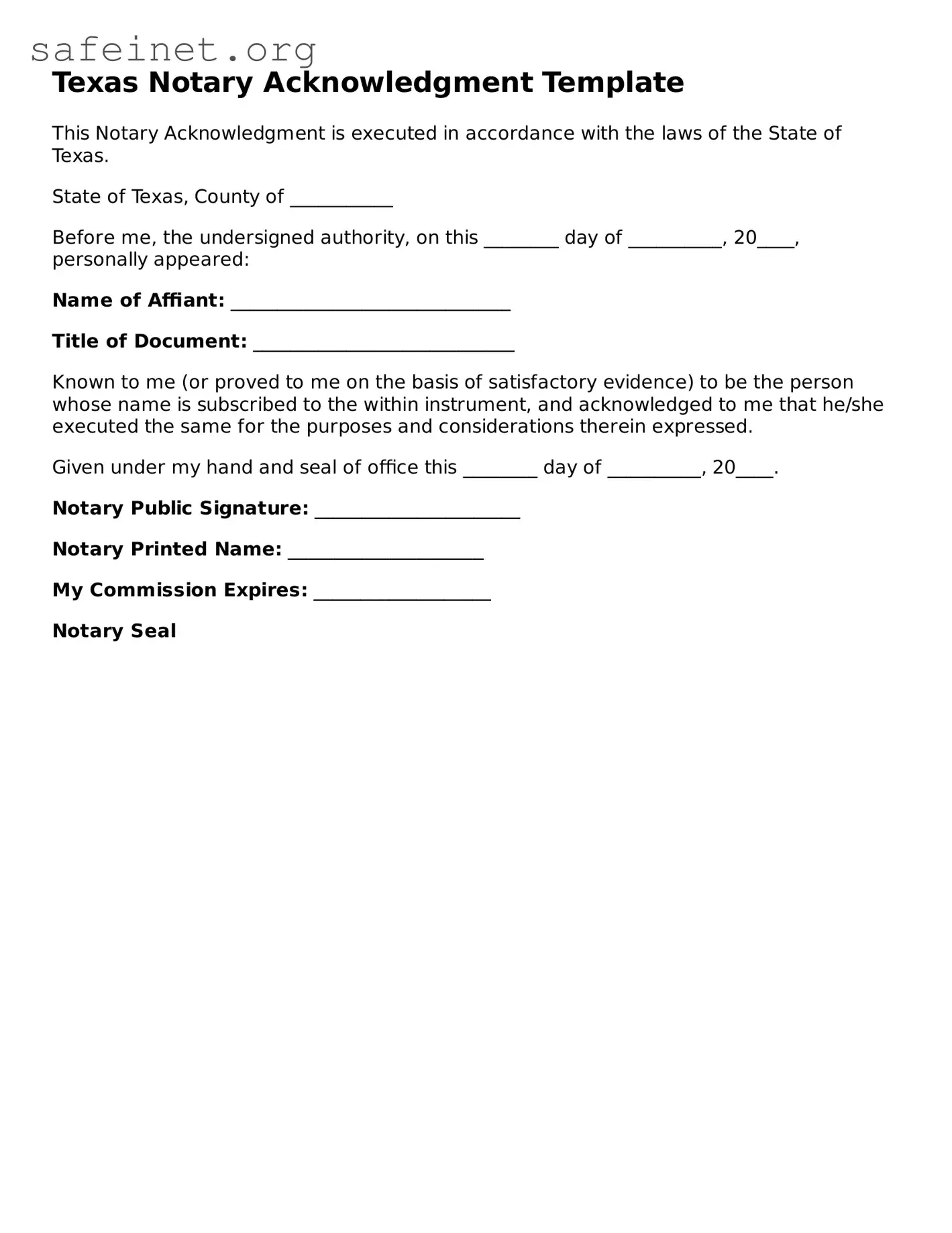Valid Notary Acknowledgement Template for the State of Texas
The Texas Notary Acknowledgement form serves as a crucial document that verifies the identity of individuals signing a legal document, ensuring that their signatures are authentic and voluntary. This form is often required in various legal transactions, providing reassurance to all parties involved. To begin the process, consider filling out the form by clicking the button below.
